Notes
Alan Chin from Watertown, MA: Endgame at 67 Franklin Street
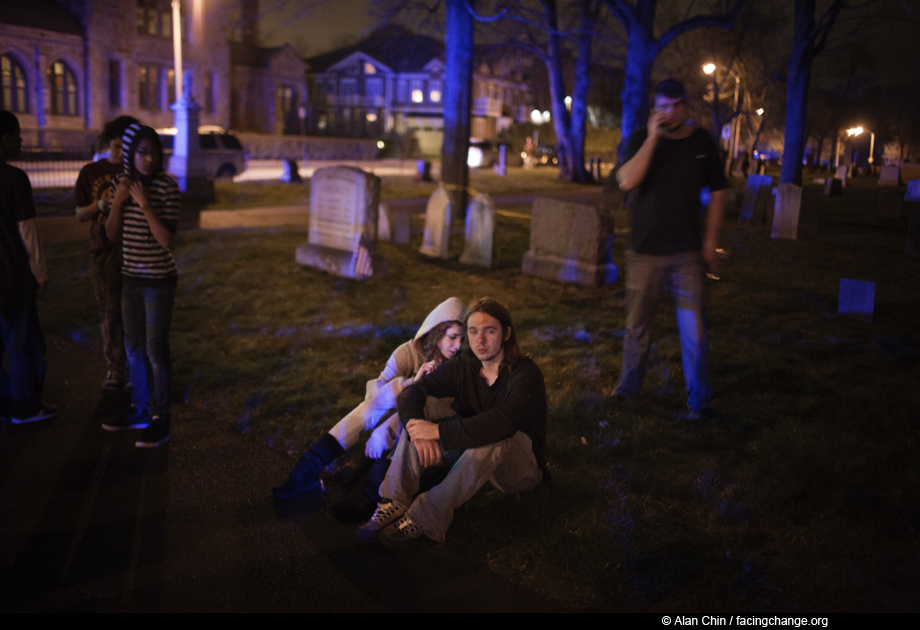 Local residents at the Common Street Cemetery during the stand-off between police and Boston Marathon suspect Dzhokhar Tsarnaev at 67 Franklin Street four blocks away.
Local residents at the Common Street Cemetery during the stand-off between police and Boston Marathon suspect Dzhokhar Tsarnaev at 67 Franklin Street four blocks away.
The release of surveillance photographs and videos showing the suspected Boston Marathon bombers was dramatic. Then came the news that a MIT campus police officer had been killed followed rapidly by reports of a firefight between the police and the suspects with another policeman badly wounded and “Suspect #1” Tamerlan Tsarnaev dead. Horrifying, but hardly unforeseen in our contemporary culture’s familiarity and fatigue with frequent and extreme violence.
What came next was surprising, at least to me: the almost complete lockdown of a major American city of over a million people. The images on television of deserted downtown Boston were reminiscent of Manhattan during the extended blackout caused by Hurricane Sandy last year, of historic blizzards – and of military coups in faraway countries. The authorities were asking people to stay inside at home while thousands of heavily armed security forces patrolled the streets.
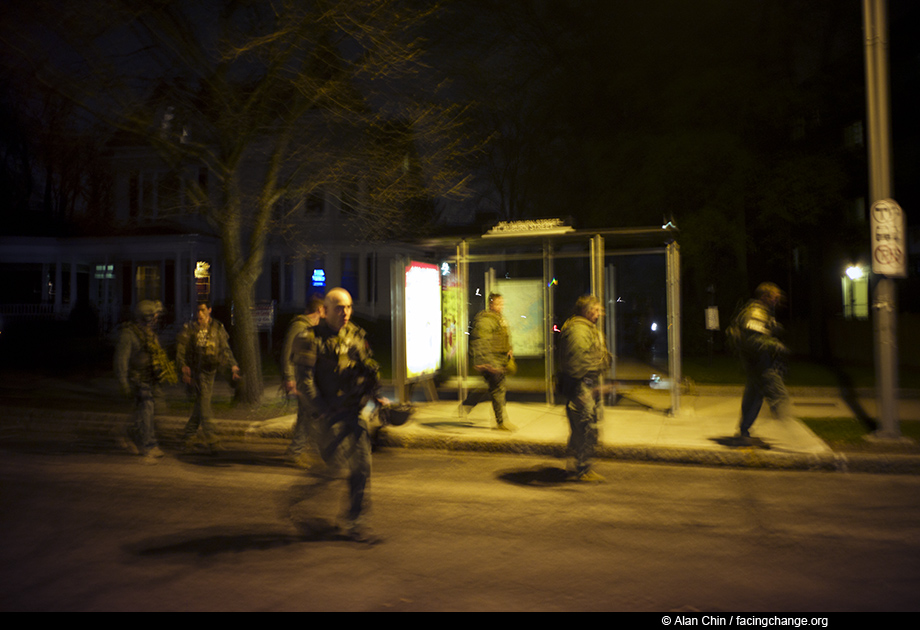 Boston SWAT team on Mt. Auburn Street, Watertown, Massachusetts.
Boston SWAT team on Mt. Auburn Street, Watertown, Massachusetts.
These police forces are now barely distinguishable from the military in both appearance and actions. Hundreds of rounds of ammunition were fired in these gun battles. The SWAT teams wear Army-style uniforms and are lavishly equipped with armored vehicles and assault rifles. And Governor Deval Patrick’s orders stopping all public transit, shuttering schools and most businesses reflect an ever-increasing focus on security above all other concerns.
All this, because one armed and dangerous young man of Chechen descent remained at large and on the run. This response is to my knowledge unprecedented in American history. Four victims and one perpetrator were dead. But with each new and ever more bizarre twist of the evolving narrative, we plunged deeper and deeper into uncharted territory of national psychic disturbance. Estimates of the cost to Boston’s economy are in the hundreds of millions of dollars. If there was ever an argument for the effectiveness of terrorism, it was just compounded in Massachusetts.
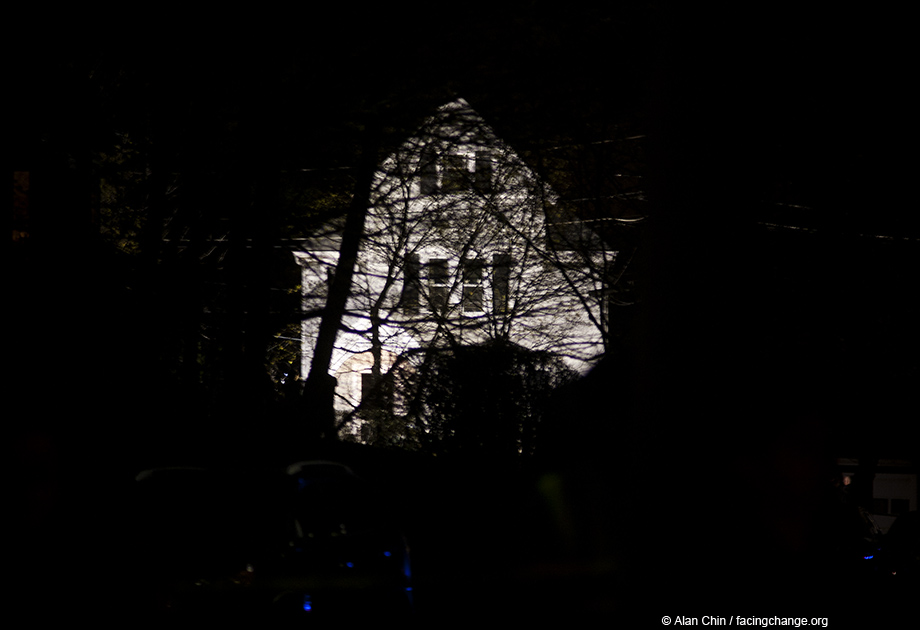 The house at 67 Franklin Street.
The house at 67 Franklin Street.
So with that in mind, when it was announced that “Suspect #2” Dzhokhar Tsarnaev had been found hiding inside a boat parked in the backyard of 67 Franklin Street in Watertown, just outside the earlier search area, and another exchange of fire turned into temporary stalemate, hundreds of local residents emerged from their houses to watch and wait in an uneasy mix of curiosity, community, and trepidation.
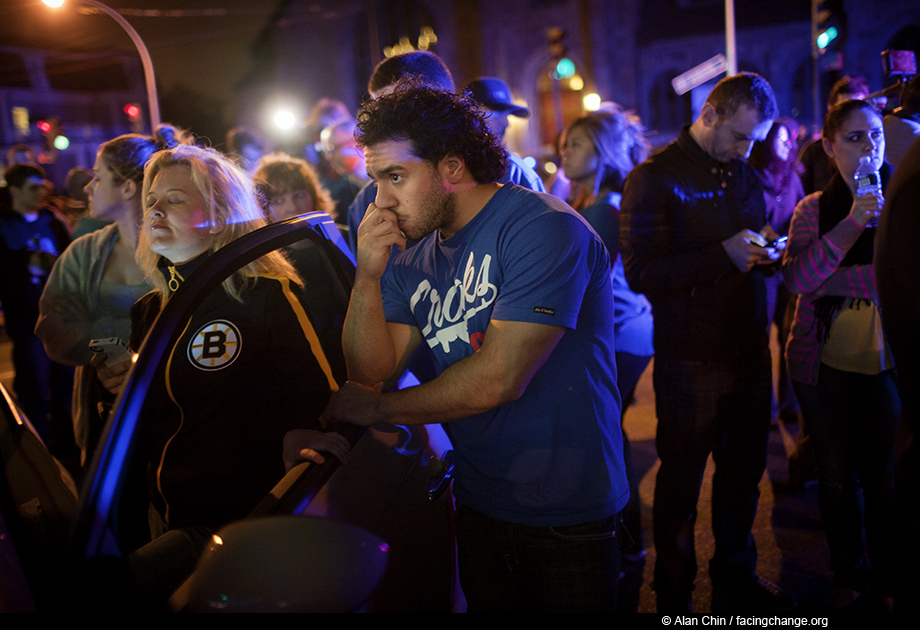 A crowd listens to the news from the parked car’s window, Mt. Auburn Street.
A crowd listens to the news from the parked car’s window, Mt. Auburn Street.
The police kept everybody back about two or three blocks away, close enough to be under the ubiquitous helicopter above, and far enough to be both safe and utterly out-of-sight of the drama unfolding so close by. It reminded, me, strangely, of how the citizens of Newtown all came out on the evening of the massacre a few short months ago. There’s a need to see and be seen, to express solidarity with neighbors and to share stories. And in that process a portrait of Americans alternately floodlit by police siren lamps and blinding light towers emerges.
When the end of the siege was announced a short time later, that Dzhokhar Tsarnaev had been arrested without further loss of life or injury, the people in the Watertown crowd were appreciative, clapping their hands, cheering the police as they left the area. Inside the police perimeter on Franklin Street it was hushed and quiet, with only the sound of generators powering the metal halide arc lights and a flight of bats rustling tree branches on what would return soon to simply a chilly spring night.
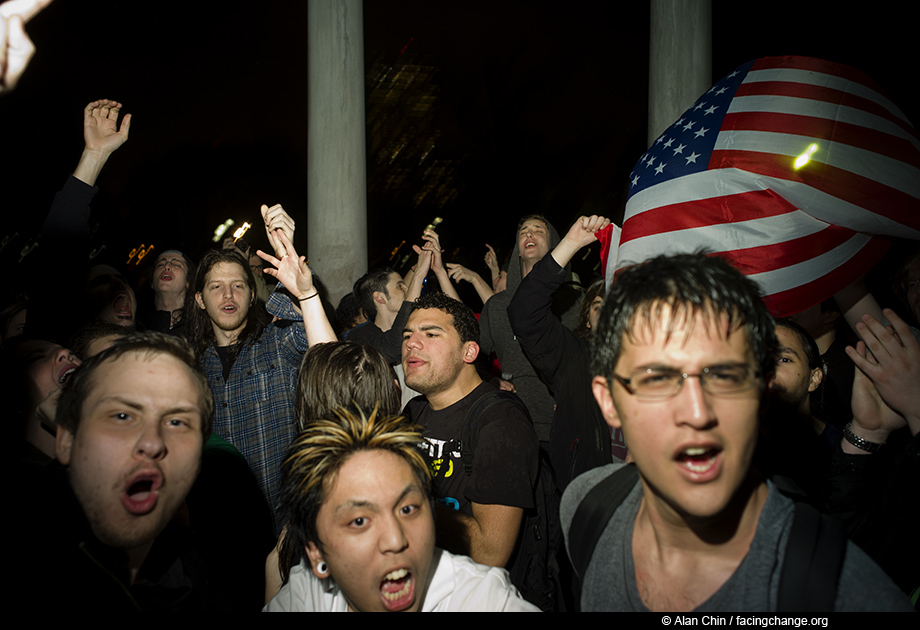 At the gazebo in the Boston Common.
At the gazebo in the Boston Common.
But downtown at the Boston Common, hundreds of college students gathered and waved American flags, screaming “U-S-A! U-S-A!” in a drunken frenzy reminiscent of the World Trade Center site the night that Osama bin Laden was shot dead. Apparently the “U-S-A! U-S-A!” chant was first truly popularized by fans of the American ice hockey team during the victory against the Soviet Union at the 1980 Winter Olympics. The fanfare surrounding that famous Cold War contest was an early expression of a style of nationalist excess that seems rougher and coarser than the consensus patriotism of previous generations. “U-S-A! U-S-A!” shouted at the top of the lungs sounds exclusionary rather than aspirational. It’s saying, “We’re the best!” rather than “Join us!” It proclaims, “If you’re not with us, you’re against us.”
It may be unfair to point it out again here, but the fact that the Czech Ambassador, Petr Gandalovic, felt the pressing need to distinguish his country from Chechnya at this moment may not be unconnected to these displays of braggadocio.
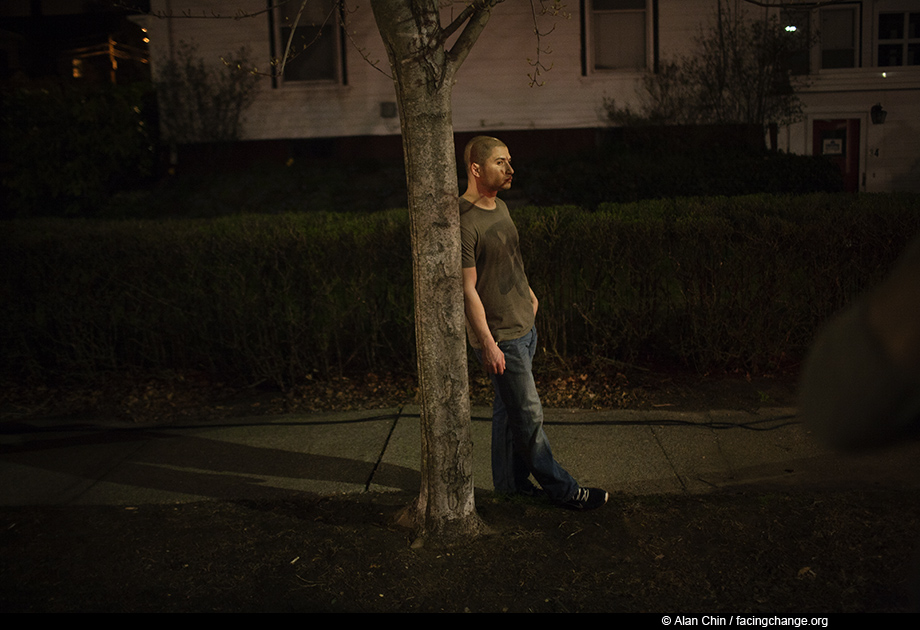 Franklin and Center Streets, one block from the house.
Franklin and Center Streets, one block from the house.
Whatever motivated the Tsarnaev brothers to allegedly murder innocents at the beloved Boston Marathon and to assassinate a police officer in cold blood, I fear that the tactical success of stopping them masks a greater danger to the intrinsic fabric of American society.
–Alan Chin
PHOTOGRAPHS by ALAN CHIN / facingchange.org
The second photograph above, of the Boston SWAT team, first appeared at The New Yorker Online.
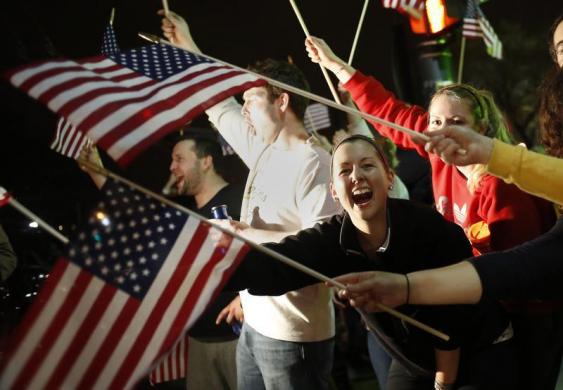
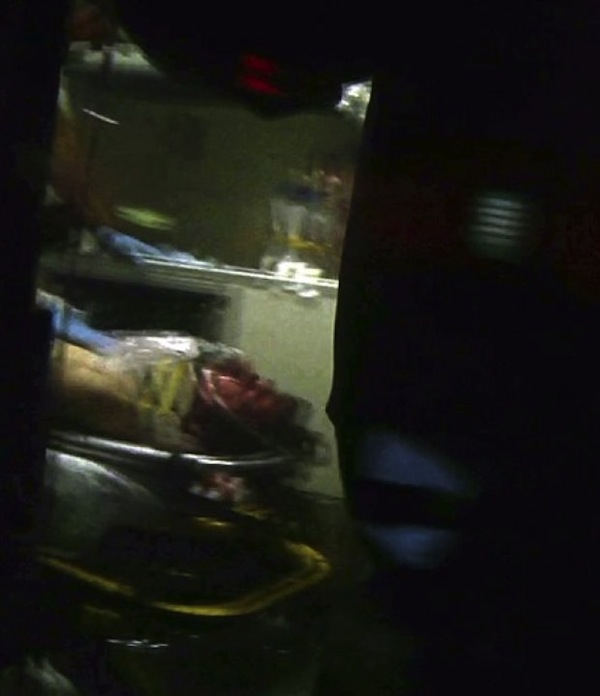
Reactions
Comments Powered by Disqus